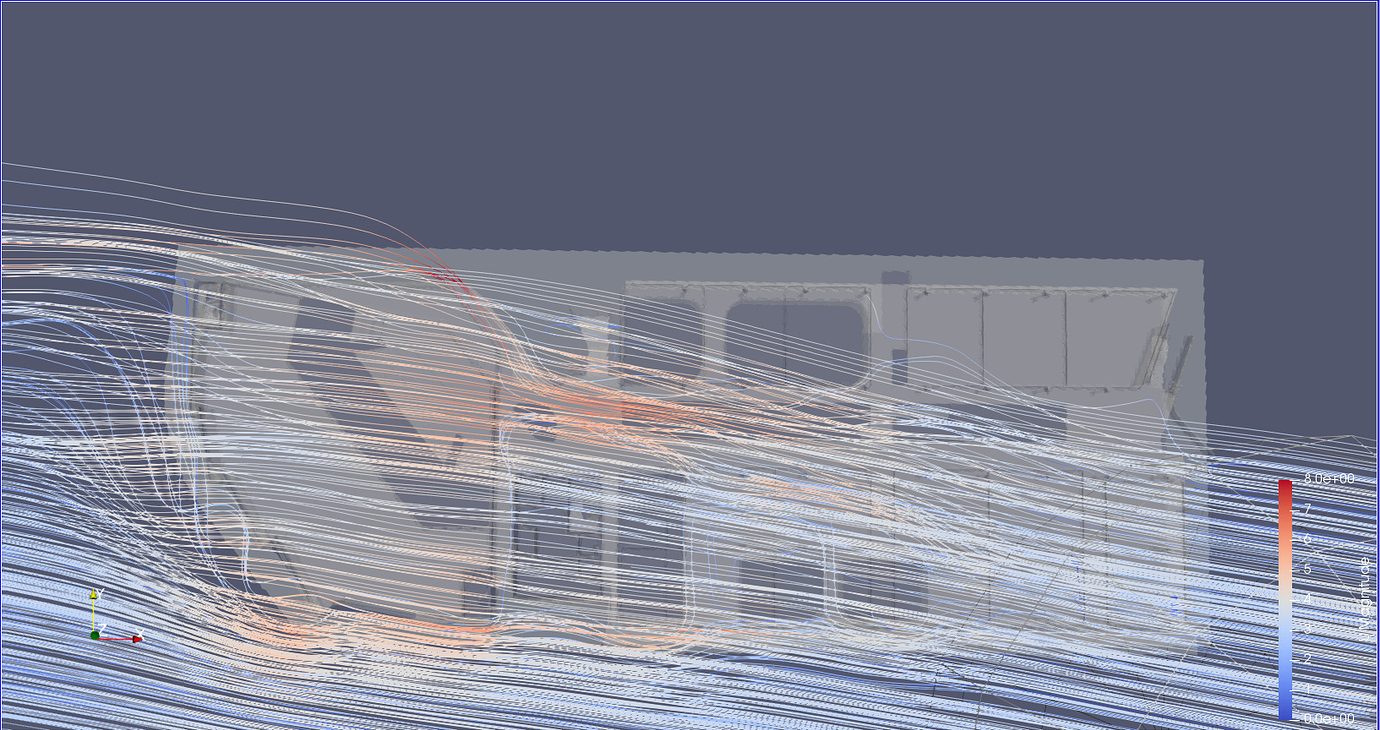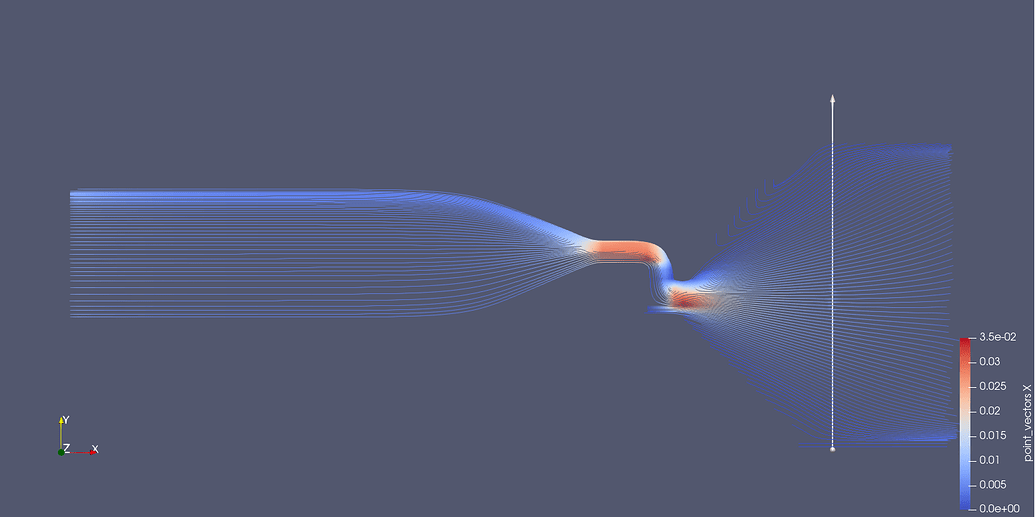

- #Paraview streamline software#
- #Paraview streamline code#
- #Paraview streamline download#
- #Paraview streamline free#
They are tangent to the vector field at every point, and this software also allows you to plot them at any location of your data just by clicking on the button indicated by the green arrow in Figure 4Īnd selecting the field vector you want to visualise as shown by the black arrow. The streamlines allow you to visualise the field orientation of a particular vector field, as shown in the left panel. calculator (to find new variables, define vectors), python calculator (allows you to use all the routines from python, like the ones available in numpy), etc.įigure 4 focuses on the streamlines and glyphs visualisation using the Streamtracer and Glyph filter, respectively. We see a pipeline structure applied to the original vtk data on the left part of the figure.Įach one of the functions applied can be selected by choosing 'Filters' and then searching for the filter to be applied To illustrate the applicability of ParaView, we show some very helpful visualisation tools for flow analysis.įigure 4 displays the screenshot for ParaView reading a part of a 3D magnetohydrodynamics simulation that has been previously analysed in Silva et al. Therefore, if you have a file that Paraview has a reader for, you can open and select the reader - shown in Figure 3, and Paraview will promptly process your data. It is quite straightforward to write an output in vtk from any software or code, and there are plenty of examples online.īut Paraview can also read different file extensions, including the type of files mostly used in flow simulations. The primary type of file Paraview reads are vtk files.

#Paraview streamline download#
To start with ParaView, you should first download the most recent version of ParaView That quality can be handy when it comes to early-career PhD researchers with little background in programming. One of the main reasons ParaView is so popular is that it can analyse and visualise data without programming.Įverything can be done interactively, and it is well documented, making ParaView very user-friendly. There are several examples of data visualisation with ParaView, see ParaView's galleryįigure 1 - Supernova visualisation using ParaView volume renderingįigure 2 - A cancer immunology hypothesis study Thereby, this software offers the necessary tools to create some high-quality images, which gives support to explain your research and can help your work gain visibility. ParaView can readily render the images based on the research data, facilitating visualisation of the data from different perspectives by rotating and post-processing the original data. It has been used in many different research fields, as illustrated in Figure 1, where we see ParaView applied in cosmology and Figure 2, where we see it applied to medical research.
#Paraview streamline free#
ParaView is free software that can visualise both observational and numerical data. Finally we had to use the FindPoint() method in order to always find the closest cells of a streamlines point.This post is based on Suzana Silva's presentation at Research IT Forum: Image processing, techniques and technology. We also had to compute and use the surface tangential vector instead of using the user provided vectors.
#Paraview streamline code#
Then we added the code to "snap" the streamlines on the surface. First it was necessary to correct the implementation of some 2D cells, as some did not compute parametric coordinates, when executing the EvaluatePosition() method. On the technical side, some improvements have been necessary in order to achieve that. See the following example: on this warped surface, there are some vectors on each point, with a direction going out of the surface, and yet, with this surface option, it is still possible to trace streamlines as you can see below. This is now done and available since ParaView 4.4: vtkStreamTracer has a SurfaceStreamlines boolean option which is exposed as an advanced option of the ParaView filter. This feature makes possible to generate streamlines on any surface, with vector in any direction. However until our recent change, streamlines missed one feature that prevented them to be used in any situation: an option to constrained them to stay on the surface. Streamlines are a great way to represent a vector field in VTK and are widely used by ParaView users.


 0 kommentar(er)
0 kommentar(er)
